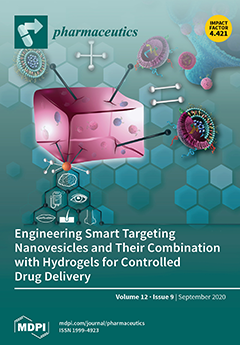Open AccessArticle
Biodegradable Electrospun Nonwovens Releasing Propolis as a Promising Dressing Material for Burn Wound Treatment
by
Mateusz Stojko, Jakub Włodarczyk, Michał Sobota, Paulina Karpeta-Jarząbek, Małgorzata Pastusiak, Henryk Janeczek, Piotr Dobrzyński, Gabriela Starczynowska, Arkadiusz Orchel, Jerzy Stojko, Olgierd Batoryna, Paweł Olczyk, Katarzyna Komosińska-Vassev, Krystyna Olczyk and Janusz Kasperczyk
Cited by 25 | Viewed by 4077
Abstract
The selection of dressing is crucial for the wound healing process. Traditional dressings protect against contamination and mechanical damage of an injured tissue. Alternatives for standard dressings are regenerating systems containing a polymer with an incorporated active compound. The aim of this research
[...] Read more.
The selection of dressing is crucial for the wound healing process. Traditional dressings protect against contamination and mechanical damage of an injured tissue. Alternatives for standard dressings are regenerating systems containing a polymer with an incorporated active compound. The aim of this research was to obtain a biodegradable wound dressing releasing propolis in a controlled manner throughout the healing process. Dressings were obtained by electrospinning a poly(lactide-
co-glycolide) copolymer (PLGA) and propolis solution. The experiment consisted of in vitro drug release studies and in vivo macroscopic treatment evaluation. In in vitro studies released active compounds, the morphology of nonwovens, chemical composition changes of polymeric material during degradation process, weight loss and water absorption were determined. For in vivo research, four domestic pigs, were used. The 21-day experiment consisted of observation of healing third-degree burn wounds supplied with PLGA 85/15 nonwovens without active compound, with 5 wt % and 10 wt % of propolis, and wounds rinsed with NaCl. The in vitro experiment showed that controlling the molar ratio of lactidyl to glycolidyl units in the PLGA copolymer gives the opportunity to change the release profile of propolis from the nonwoven. The in vivo research showed that PLGA nonwovens with propolis may be a promising dressing material in the treatment of severe burn wounds.
Full article
►▼
Show Figures






